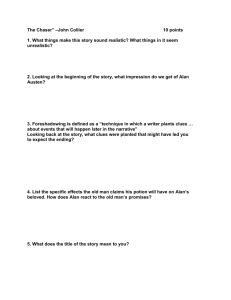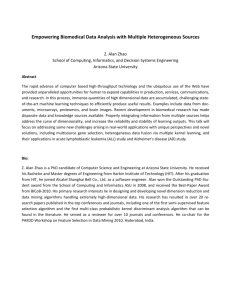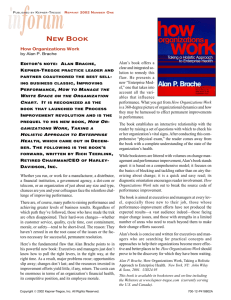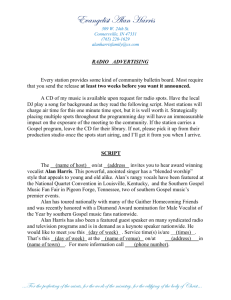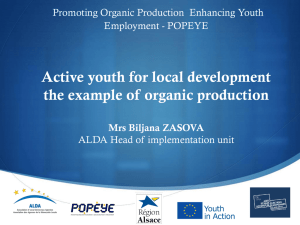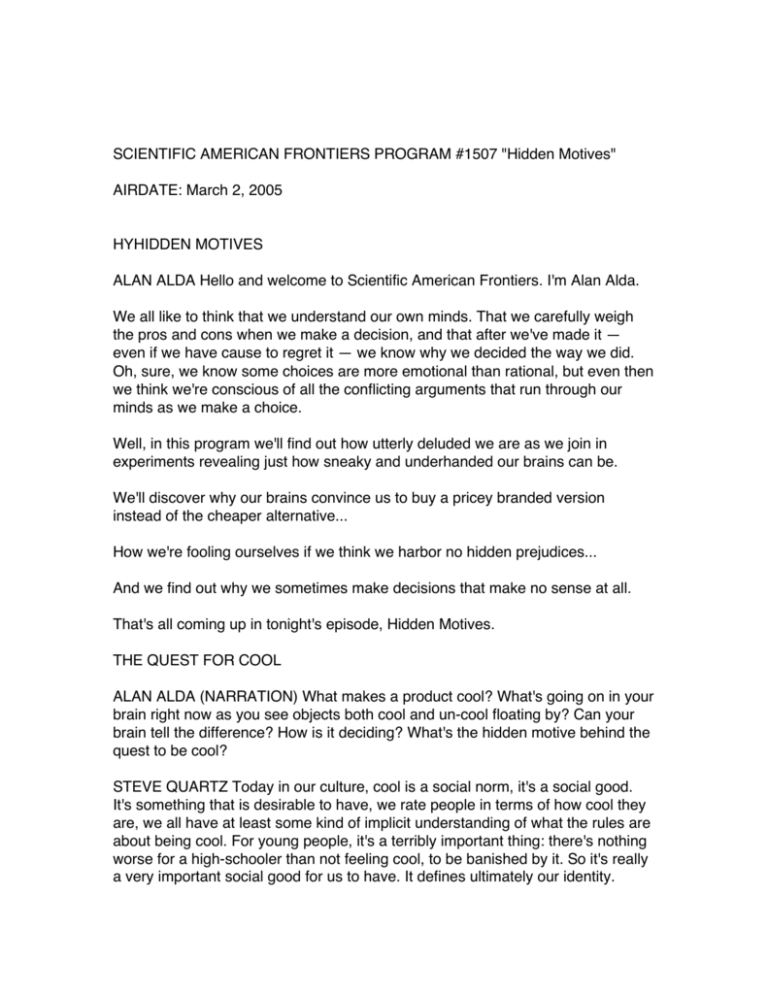
SCIENTIFIC AMERICAN FRONTIERS PROGRAM #1507 "Hidden Motives"
AIRDATE: March 2, 2005
HYHIDDEN MOTIVES
ALAN ALDA Hello and welcome to Scientific American Frontiers. I'm Alan Alda.
We all like to think that we understand our own minds. That we carefully weigh
the pros and cons when we make a decision, and that after we've made it —
even if we have cause to regret it — we know why we decided the way we did.
Oh, sure, we know some choices are more emotional than rational, but even then
we think we're conscious of all the conflicting arguments that run through our
minds as we make a choice.
Well, in this program we'll find out how utterly deluded we are as we join in
experiments revealing just how sneaky and underhanded our brains can be.
We'll discover why our brains convince us to buy a pricey branded version
instead of the cheaper alternative...
How we're fooling ourselves if we think we harbor no hidden prejudices...
And we find out why we sometimes make decisions that make no sense at all.
That's all coming up in tonight's episode, Hidden Motives.
THE QUEST FOR COOL
ALAN ALDA (NARRATION) What makes a product cool? What's going on in your
brain right now as you see objects both cool and un-cool floating by? Can your
brain tell the difference? How is it deciding? What's the hidden motive behind the
quest to be cool?
STEVE QUARTZ Today in our culture, cool is a social norm, it's a social good.
It's something that is desirable to have, we rate people in terms of how cool they
are, we all have at least some kind of implicit understanding of what the rules are
about being cool. For young people, it's a terribly important thing: there's nothing
worse for a high-schooler than not feeling cool, to be banished by it. So it's really
a very important social good for us to have. It defines ultimately our identity.
ALAN ALDA (NARRATION) So — how cool am I?
TECHNICIAN This is the emergency buzzer...
ALAN ALDA (NARRATION) To find out, I've agreed to have my head examined
— by lying in an MRI machine that will allow Steve Quartz to peer into my brain
while I'm looking at pictures. Steve wants to see if my brain reacts differently to
the images of things I think are cool as opposed to those I find un-cool. One
problem for me right away is that I have no clue whether many of the 140 things
parading in front of my eyes are cool or not — or even whether I think they're cool
or not — or even, in some cases, what they are. It doesn't matter, all I have to do
consciously is look at them. It's what my unconscious is doing — what's going on
in my brain that I'm not even aware of — that Steve and his collaborators are
interested in. Because while on the one hand what's cool right now in our culture
can be viewed as trivial and passing — after all there's nothing more un-cool than
something that was cool last week — on the other hand, how we decide what's
cool, Steve believes requires the most highly evolved part of our brains — the
most uniquely human — and involves nothing less than our sense of self All that
from looking at stuff like shoes... It took about 30 minutes in the scanner, my
brain now reeling from consumer overload.
ANETTE ASP So now we're done with the scan, we have a little survey for you...
ALAN ALDA (NARRATION) Anette Asp is Steve Quartz's extremely cool
collaborator.
ANETTE ASP All the images you saw in the experiment are represented here on
this paper. It goes from zero to five, and you're going to rate each image from
zero, meaning not cool, to five meaning very cool.
ALAN ALDA Very cool. OK, so how do I translate that to me? If I think, do I like it,
do I think it's pleasant, nice... How do I?
ANETTE ASP How you experienced them. If you think it's cool.
ALAN ALDA I mean, different people think different things by cool. This is not me
saying what I think other people think are cool. This is me saying how I respond
to it.
ANETTE ASP Yes, exactly.
ALAN ALDA OK.
ALAN ALDA (NARRATION) By the way, all these objects were chosen for their
coolness by a panel of design experts. But it's not what they think that matters,
right?
ALAN ALDA This looks un-cool to me, but I like it. So I'm saying that's cool... sort
of cool. Oh, very un-cool here, very not cool. I don't know what this is, I don't like
it. Ah, very cool, finally we got very cool.
ALAN ALDA (NARRATION) The iPod even I can recognize as cool. But most of
this stuff...
STEVE QUARTZ It turned you that you rated most of the objects as un-cool, the
majority of them as un-cool. So we took the ones that you rated cool and the
ones that you rated un-cool to look at the difference. So, here's you.
ALAN ALDA OK.
STEVE QUARTZ This is you looking at the cool objects.
ALAN ALDA At the cool ones.
STEVE QUARTZ At the cool ones. Very little activation overall.
ALAN ALDA (NARRATION) It seems that the cool stuff left me cold, my brain
remaining stubbornly indifferent even to things like the iPod that I thought were
cool. But here's the surprise. To objects I later labeled un-cool, my brain lit up —
most especially in an area that has long fascinated Steve Quartz right at the very
front of the brain, where he believes our sense of self resides. About a third of
everyone run through the scanner had this strong negative reaction to the uncool, including — to her astonishment — Anette.
ANETTE ASP I had the same response. And I said I just ignored all the images
that were un-cool, I'm just focusing on the cool images in the scanner. I came out
and looked at the results afterwards and I responded exactly like you. Completely
unanticipated. ALAN ALDA OK, now what about people like us? What for
example did you react to negatively on that list?
ANETTE ASP Well, there were some sunglasses, some cars, water bottles,
shoes — I mean especially clothes for me, it's a big deal. And I think the people
who are high negative responders are very consciously aware of what's cool, but
their main focus is to stay away from everything that is un-cool, and that's how
our brains respond.
ALAN ALDA It doesn't seem like it results in a gray life. I mean, you seem very
cool. Tour hair is cool, you outfit is cool, right? Look at your ring there, it's great.
ANETTE ASP Thank you. Well, I think that just the fact that my brain responds so
intensely to the negative stimuli, the un-cool, makes me sweat even harder to be
cool.
ALAN ALDA (NARRATION) But while Anette and I have brains that
unconsciously recoil from the un-cool, people in the next biggest group tested in
the scanner have the opposite response. Their brains ignore the un-cool, but go
wild — especially in that part at the front where our sense of social status lies —
when confronted with cool. What's more, another part of the brain involved in
planning movement also lights up, suggesting they are subconsciously reaching
out to grab the product.
STEVE QUARTZ Being one myself...
ANETTE ASP Guess what he is...
ALAN ALDA Are you highly positive in response to cool?
STEVE QUARTZ I am, I am. I... it certainly gives me clues when I walk into a
store of what to be aware of.
ANETTE ASP His brain is biased by everything that is positive, like the cool
stimuli. It's very attractive to his brain. And it might be that people in that category
are more impulsive , they're shop-aholics or they're... it's important to them to be
on top of trends and know about a new product coming out on the market first.
They tend to jump on the new stuff faster than the people who are more worried
about being cool in terms of staying away from the un-cool products.
ALAN ALDA And Steve, is that how you see yourself. Was it a surprise to you to
scan yourself?
STEVE QUARTZ No, it actually confirmed my wife's suspicions.
ALAN ALDA Have you scanned your wife?
STEVE QUARTZ No, she's afraid to know what she is!
ALAN ALDA (NARRATION) Not surprisingly, this new ability to see inside our
heads as we contemplate what's cool enough to covet — what attracts us to $8
dollar bottles of water and $5000 watches — is also attracting the attention of
marketers who'd like us to buy them. In fact a whole new business called
neuromarketing is already using brain imaging to seek out the hidden motives
behind our consumer desires.
HIDDEN PREJUDICE
ALAN ALDA (NARRATION) I've always thought of myself as a feminist. So I'm
pretty sure I know how I'll do in this test of my reaction to women in the
workplace...
ALAN ALDA I am ready to begin.
ALAN ALDA (NARRATION) ...women, in fact, like Mahzarin Banaji, who's a
professor here at Harvard University. The test is called the Implicit Association
Test, and it begins simply enough. I have to pair the word in the center with one
of the words above, by pressing the e key with my left hand or the i key with my
right. Mahzarin has told me to do this a fast as I can, because it's the time I take
to make the associations that's critical to the test. Now the target words have
changed, but the task remains the same, to quickly decide whether the new
words belong to the left or the right. But things are about to get trickier.
MAHZARIN BANAJI It's the same thing, except that now any one of these four
will show up, and when it's career or male you press the left key, when it's family
or female you press the right key.
ALAN ALDA Career or male.
MAHZARIN BANAJI Yes.
ALAN ALDA (NARRATION) So now the categories are described by two words,
making it harder to decide where the new words belong. But since historically
male and career have gone together...
ALAN ALDA This is like you're reinforcing the stereotype here.
MAHZARIN BANAJI Yes exactly.
ALAN ALDA (NARRATION) The point of the test is to discover if, lurking beneath
my feminist convictions, I actually harbor a hidden bias against women in the
workplace based on all the associations between man and career and women
and family that bathed the culture I grew up in.
ALAN ALDA Family or male, career or female. OK, now you're testing me.
MAHZARIN BANAJI Now we're testing you.
ALAN ALDA (NARRATION) The Implicit Association Test is designed to ferret
out any bias by seeing if it takes me fractionally longer to figure out where a word
belongs when the pairing of the target words — in this case family and male
together, and career and female — is slightly more difficult for my brain to accept.
ALAN ALDA Corporation... family, career... You are done.
MAHZARIN BANAJI Slight. I could tell, this is very good. So let's see, you are
showing a slight automatic association between male and career and only 12% of
the population that takes this test shows this bias. What you're seeing is that you
are showing a much smaller bias that what many other people show. I'm up here,
I make a strong association between male and career and between female and
family even though that's not what I consciously express.
ALAN ALDA Even though that's not what you live?
MAHZARIN BANAJI That's not what I live, but in my world... I don't know, maybe
many years of working in feminist causes made you show this less.
ALAN ALDA (NARRATION) So all those years of working in feminist causes
didn't manage to totally eliminate my lingering association between female and
family, and male and career. What's astonishing, though, is that Mahzarin is far
worse — and she's not only enjoying a very successful career — she designed
the test! Another of its designers is Brian Nosek, who personally developed the
test he's taking now, intended to reveal hidden racial prejudice.
ALAN ALDA These are the same faces you've seen many times.
BRIAN NOSEK Many times, many times. In fact I helped create the faces, so...
ALAN ALDA (NARRATION) The heart of this test is to see whether it is easier for
Brian to match words or pictures to pairings of African American with bad, and
European American with good... than when the pairings are reversed, European
Americans with bad and African Americans with good.
MAHZARIN BANAJI I can predict.
BRIAN NOSEK Yeah, what do you think?
MAHZARIN BANAJI Moderate. Moderate to strong.
BRIAN NOSEK I say moderate as well. Strong preference for white!
ALAN ALDA You're taking this for the umpteenth time and you still haven't caught
on to the fact that you're a little biased?
BRIAN NOSEK I think part of it is the insistence that my conscious beliefs still
matter. It isn't that the fact that I keep showing these implicit biases means that
I'm a biased person so we should just accept that and move on. It's that, no, I
don't agree with those. I do have them, and I will admit to having these implicit
biases, but I'm not going to let that rule what I consciously want to have.
ALAN ALDA (NARRATION) It really is remarkable that here I am in Cambridge,
Massachusetts, perhaps the liberal capital of the country, with two academics
who pride themselves on their enlightened attitudes, only to discover that they
have latent within them biases they would fervently deny if their own test hadn't
revealed them. But all may not be lost.
BRIAN NOSEK We have found in research and also in testing of myself, that if I
put myself in a situation where I think about positive black exemplars, I think
about Michael Jordan and Colin Powell and people — Martin Luther King —
people who have had a very positive impact and who are also African American, I
show much less bias immediately after thinking about those exemplars that if I
hadn't thought about them before.
MAHZARIN BANAJI Even the simple things, like the presence of an African
American experimenter reduces race bias. That the presence of a competent
woman makes women's attitude to math become more positive. These kinds of
studies sit in contradiction to ways in which people like I thought about these. We
thought they were learned over long periods of time, that they were entrenched,
they were rigid, inflexible, and in fact that does not appear to be the case, and I
think that that's where the room for optimism is. So on the one hand I would like
people to take these data seriously when we can show the vast numbers of
people who show the bias I think we need to contend with that. On the other
hand, what this work is showing is that it might not be hard to shape
environments that can change these even automatic kinds of attitudes.
ALAN ALDA (NARRATION) You can find out if you harbor unconscious biases
you would deny even to yourself by logging on to the Project Implicit web site.
There you'll find tests of attitudes toward such things as age and religion as well
as lighter fare like the Harry Potter movies versus The Lord of the Rings. Give it a
try. You may be in for a shock.
TOUGH CHOICES ALAN ALDA (NARRATION) A harrowing true story used on
MASH has been borrowed by researchers looking for the hidden struggles that
go on when our brains are confronted with a moral dilemma. A bus full of people
has to hide from enemy soldiers...
SOLDIER Quiet, nobody make a sound until they've passed.
ALAN ALDA (NARRATION) But a crying baby endangers everyone's life.
Hawkeye urges the mother to keep the baby quiet — and she ends up
smothering it. The question is: Is it OK to sacrifice one life in a situation like his to
save the lives of everyone else? The question has been asked of subjects in a
study at Princeton University — along with another version of the same dilemma,
involving a train, or in some accounts, a trolley. You're standing next to a railroad
switch as a train approaches. If you do nothing, the train will surely kill five foolish
but innocent people standing on the track. You could save them by hitting the
switch, diverting the train. The problem is that there's another foolish innocent
standing on the second track.
JOSHUA GREENE So the moral question is, is it OK to hit the switch so you only
run over one person instead of five? What do you think? Off the top of your
head? ALAN ALDA Off the top of my head it seems it would be regrettable to kill
anybody, but if you could save the five people, then you would throw the switch.
JOSHUA GREENE Well, that's what pretty much everybody we ask says. Okay,
now here's a slightly different case. Trolley headed towards five people, this time,
there's no other track. You're on a footbridge standing over the track. And you're
standing next to this big person. And this time, the only way you can save those
five people is to push the big guy off of bridge. He'll land on the tracks. He'll get
squashed by the train. He'll die, but the five people will live.
ALAN ALDA Okay, so, will I push him off the bridge?
JOSHUA GREENE Yeah.
ALAN ALDA Well, it's so hypothetical. I mean, I don't even understand...First of
all, I don't understand how he could ... I'd have to be really convinced that he
could stop the train. But I'd be, as I'm sure most people would be, less inclined to
push the guy. But, um...I don't know....It depends. It kind of depends, I mean, do I
have anything against this guy?
JOSHUA GREENE No.
ALAN ALDA Would it matter to me if I lost him?
JONATHAN COHEN Yeah. Is that what you really want to do?
JOSHUA GREENE The fact that you're looking for all these sort of angles and
ways out and things to question is very telling. Because most people are made
rather uncomfortable by that one.
ALAN ALDA Right. I'm taking a very active role--.
JOSHUA GREENE Structurally, these are very similar cases. I mean, it's death
by trolley to one person in order to save five people. Perhaps you can try and find
a reason why it's OK. And this is what philosophers have been busy doing...Well
we put the philosophical question about what is right and wrong aside for a
second, and we asked, what's going on in the brain?
ALAN ALDA (NARRATION) What they found when people struggled with these
problems in a scanner is that regions of the brain thought to be involved in
emotion lit up when people thought about pushing the guy off the bridge. And just
as I did, it took them longer to make that decision than the less personal one of
throwing the switch. How emotion and rationality compete in decision-making is
also the subject of an experiment that I'm about to be suckered into — along,
apparently, with some dozen Princeton students.
ALAN SANFEY Our subject today is going to Alan Alda, whom I'm sure you all
recognize, and slightly different from out run of the mill Princeton undergraduate.
And so, the way it'll work is that each of you, in turn, will play one round of the
game. You'll be brought into a room and sat in front of a computer terminal. You'll
play the game with Alan who's gonna be downstairs in the scanner.
ALAN ALDA (NARRATION) I'll be having my brain scanned while each of the
other players offers to split ten dollars with me. I can either accept or reject the
offer — but if I turn it down, we both get nothing.
ALAN ALDA Well, if they give me a ridiculous offer, then I lose money because I
don't accept their ridiculous offer?
JIM RILLING That's correct. If you reject the offer, neither of you get anything.
ALAN ALDA This game is like life.
ALAN ALDA (NARRATION) So it's into the MRI machine I go again. I'm given a
button box to respond to the offers, which I can see projected on to a mirror
above my face.
JIM RILLING Alan, are you able to read the words "Welcome to the Experiment"
written on the screen there?
ALAN ALDA Yes.
ALAN ALDA (NARRATION) I hadn't expected a computer as a partner — but it's
offer seems what a reasonable machine would make — so OK, I'll take it. Kelly
seemed like a nice person... and she is, fine. Kathleen, let's see... What? That's
ridiculous. No way. I'm beginning to wonder if this is a set-up and the people
aren't actually playing, just lending their faces. Ah, another selfish oaf... Take
that. Clare... surely...Oh, dud, dum, dum...yes, no... No. To heck with it. I'm now
pretty sure I'm being manipulated by the experimenters, not those nice polite
Princeton students...Oh, here's the computer again — maybe I can teach this
thing a lesson in manners too. Zap. I was just one of some 20 people scanned in
the study, which found that in most of us, blatantly unfair offers activated regions
of our brains associated with feelings of anger and disgust. What's more, these
responses were stronger when we thought the offer was coming from a person
rather than from the computer
ALAN ALDA Was there somebody live on the other end?
ALAN SANFEY Well, um, no. Not exactly, no.
ALAN ALDA At one point they were alive. When you took their picture.
ALAN SANFEY Exactly.
ALAN ALDA I think it occurred to me somewhere in the middle of the first run, I
think.
ALAN SANFEY Did that affect how you played the game?
ALAN ALDA No, I played it as if they were real people.
JONATHAN COHEN You actually rejected a couple of offers from the computer
where it made avowedly unfair offers but nevertheless there's presumably there's
no personal...
ALAN ALDA Well, the chances were better for me if I assumed I could move the
computer around than if I just had an emotional reaction to it.
JONATHAN COHEN Or if it was just a dry response. Which is, "Hey, it's just a
computer, what do I care? I'll take the two bucks and run. There's no
consequences down the road for what I get.
ALAN ALDA And it's just a couple of bucks, I could--.
JONATHAN COHEN We discussed that too. And at first we thought, maybe this
is an inconsequential part of your salary, but then we realized, this is
PBS...maybe this is more than your getting.
ALAN ALDA No. I did very well today.
JONATHAN COHEN We haven't paid you yet. This is part of the experiment.
ALAN SANFEY You want this right now?
ALAN ALDA You think I'll be giving this back to Princeton. Forget it. What did I
make?
ALAN SANFEY Forty eight dollars.
ALAN ALDA Forty eight dollars.
JONATHAN COHEN Not bad, huh?
ALAN ALDA Now, of course, you know, this has nothing to do with the science,
but how did I do compared to other people?
JONATHAN COHEN I'll let these guys answer, because they're the ones...
ALAN ALDA Is that about average?
ALAN SANFEY That's actually low. Because most people would be...would reject
less offers.
ALAN ALDA They would. Because... What do they report when they talk to you?
Why would reject?
ALAN SANFEY Typically around the 7 and 3 mark, people have typically told us,
"It's a little bit unfair but it's not too bad." So they tend to accept that. They also
tend to accept everything a computer offers them. They don't really draw
distinction between fairness and unfairness of a computer. Most of them will
reject a 9 and 1 offer, and about half will reject the 8 and 2, and most will accept
the 7 and 3.
ALAN ALDA (NARRATION) When the offers are 7 and 3, the rational regions of
the brain become more active than the emotional centers, suggesting that reason
is overcoming outrage. Since at least the days of Sigmund Freud, we've been
aware that there are hidden motives behind much of what we decide and what
we do. The tools of science are now revealing the clamor within our brains as
these hidden motives compete — and this may one day help us better
understand that clamor so that our decisions aren't quite so...well, dumb.
ALAN ALDA It would be interesting to know what you recorded when I was
offered the 7 and 3. Because I thought, well, gee, that's being awfully particular.
Why don't you take the three? But I thought, no, no.
© 1990-2005 The Chedd-Angier Production Company, Inc. All rights reserved.

